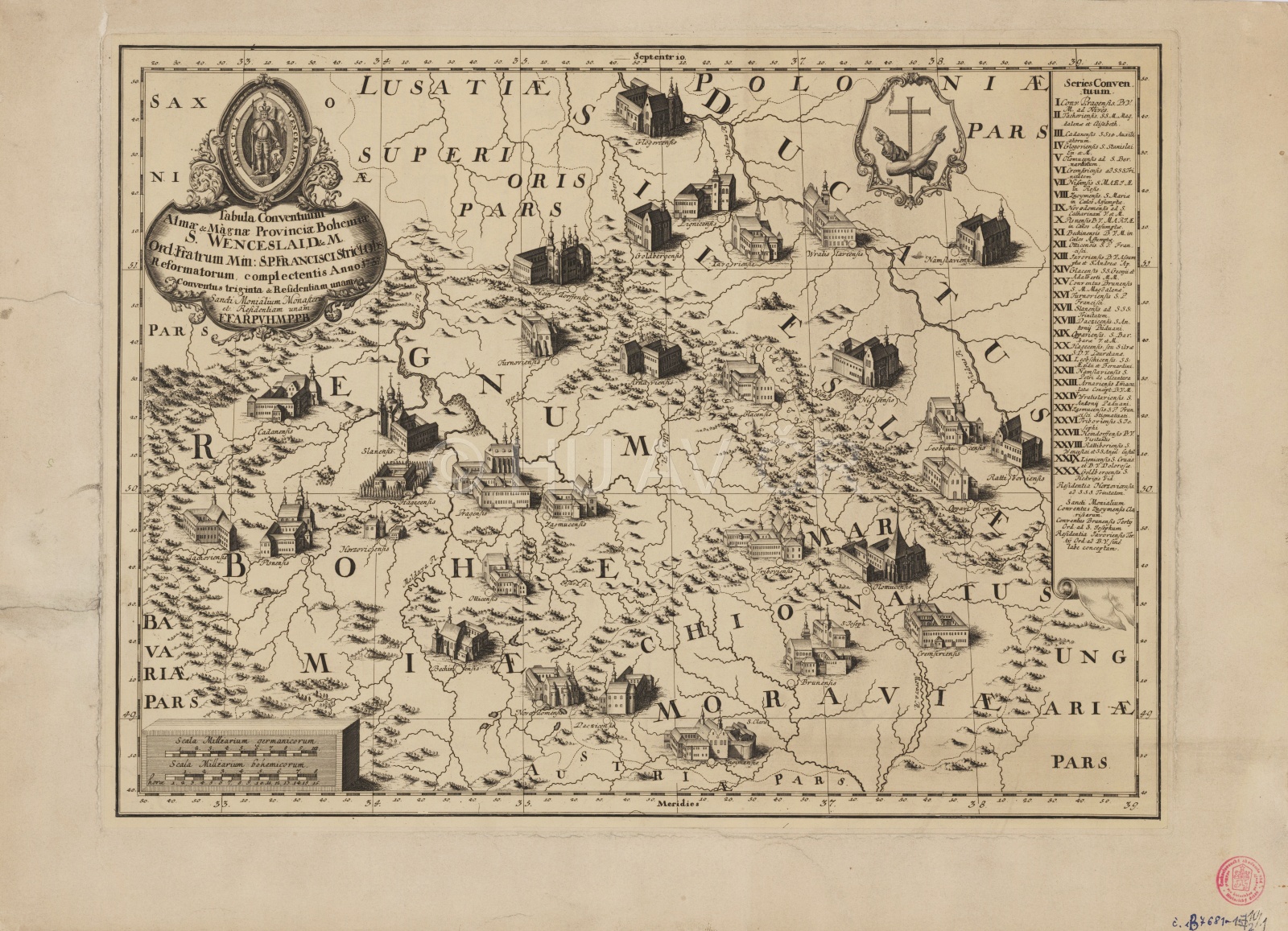Ecclesiastical administration in Bohemia at the turn of the 17th and 18th centuries
After the defeat of the Bohemian Revolt and liquidation of the non-Catholic confessions, the Catholic Church had to ensure spiritual administration throughout Bohemia. Its territory included the Prague archdiocese with Kłodzko and Lusatia, but not the Cheb region. The Archbishop of Prague Cardinal Ernst Adalbert von Harrach (1598–1667) was forced to reorganize the ecclesiastical administration in Bohemia and make it more transparent. The first step involved establishment of vicariates, which became a central link between the archbishop and his office (consistory) and the individual priests. The further reform involved creation of new bishoprics of Litoměřice (1655) and Hradec Králové (1664).

Cardinal Ernst Adalbert Harrach (1598–1667). Wikimedia Commons. Available here, [cit. 26.12.2020]
References
Krasl, F.: Arnošt hrabě Harrach, kardinál sv. církve římské a kníže, arcibiskup pražský. Historicko-kritické vypsání náboženských poměrů v Čechách od roku 1623–1667. Praha 1886, s. 421–434;
Podlaha, A.: Dějiny arcidiecéze pražské od konce století XVII. do počátku století XIX. Díl I. Doba arcibiskupa Jana Josefa hraběte Breunera (1694–1710). Praha 1917, s. 31–142;
Čáňová, E.: Vývoj správy pražské arcidiecéze v době násilné rekatolizace Čech (1620–1671), SAP 35, 1985, č. 2, s. 486–557;
Janák, J. – Hledíková, Z.: Dějiny správy v českých zemích do roku 1945. Praha 1989, s. 224–226;
Maur, E.: Problémy farní organizace pobělohorských Čech. In: Hledíková, Z. (ed.): Traditio et cultus. Miscellanea historica bohemica Miloslao Vlk, archiepiscopo Pragensi, ab eius collegis amicisque ad annum sexagesimum dedicata. Praha 1993, s. 163–176;
Semotanová, E. ‒ Cajthaml, J. a kol.: Akademický atlas českých dějin. Praha 2014, 2. akt. vydání 2016.

This work is licensed under a Creative Commons BY-NC-ND 4.0
Ecclesiastical administration in Moravia and Silesia at the turn of the 17th and 18th centuries
In the post-White Mountain period, the need to restore and reorganize the parish network in Moravia and Silesia emerged. The Olomouc Bishop Karl II von Liechtenstein-Kastelkorn (1664–1695) increased the existing amount of deaneries by dividing some of them to smaller districts. In 1677, the territory of the diocese was divided into four archdeaconries (Brno, Olomouc, Opava and Znojmo), 39 deaneries and 634 parishes. The division of large parishes and deaneries took place under Bishop Cardinal Ferdinand Julius Troyer (1745–1758). In 1777, the Olomouc bishopric was promoted to archbishopric and the Brno bishopric was simultaneously established on part of its territory. In 1782, the archdeaconries in the Olomouc archdiocese were cancelled and replaced with archpriesthoods. For the so-called Austrian Silesia, which belonged to the Wrocław diocese, the office of general vicar was created and two directorates (Cieszyn and Nysa, established in 1744) were subjected to it; these further divided into archpriesthoods (deaneries).
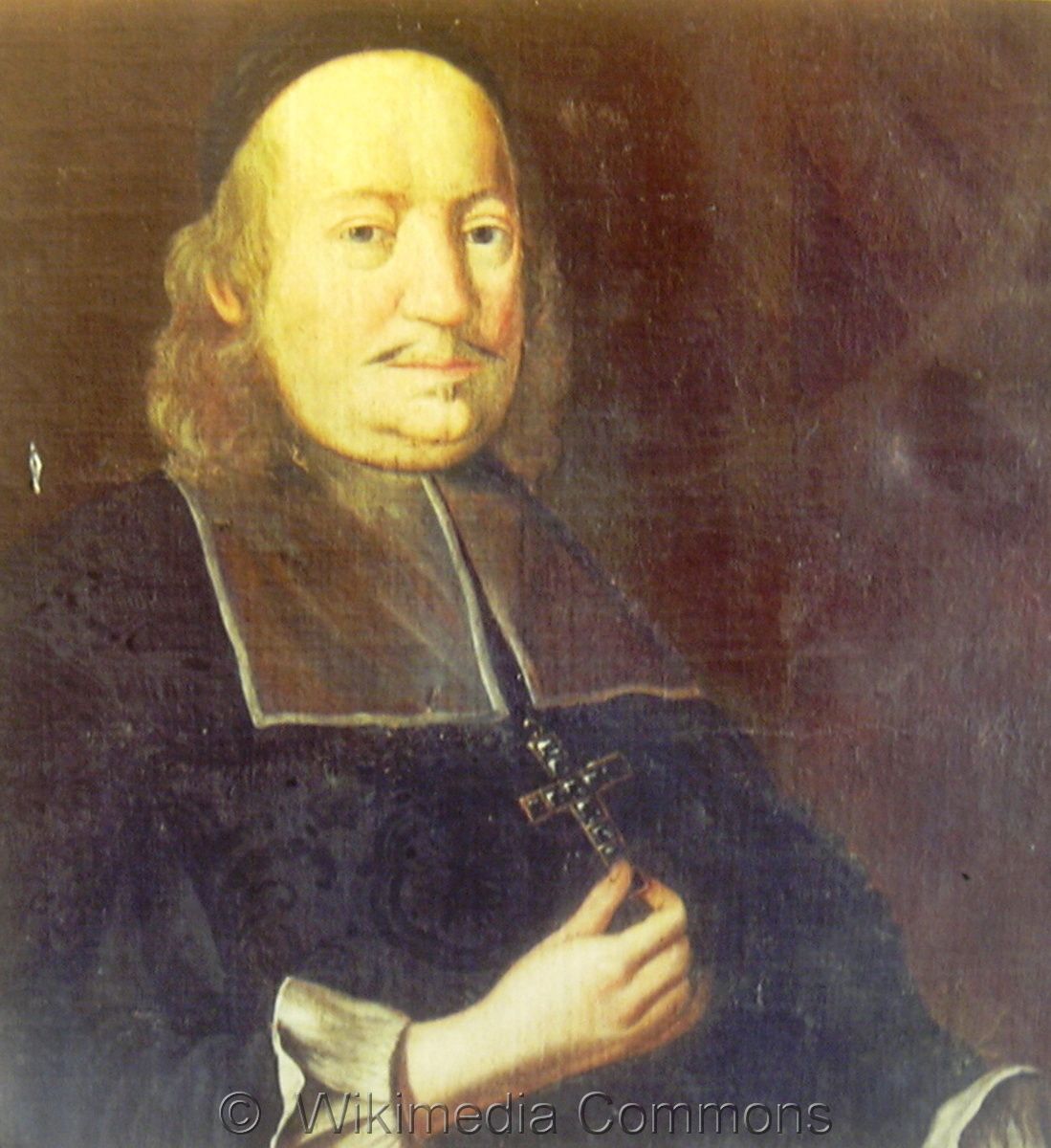
Carl Liechtenstein-Castelcorn (1664–1695), Bishop of Olomouc. Wikimedia Commons. Available here, [26/12/2020]
References
Válka, J.: Morava reformace, renesance a baroka. In: Dějiny Moravy 2. Brno 1996, s. 48–60, 151–166 (rekonstrukční mapa J. Oppeltové);
Válová, K.: Curia episcopalis Olomucensis v raném novověku. Olomouc 2002, s. 22–33;
Zuber, R.: Osudy moravské církve v 18. století. I. díl. Praha 1987, s. 46–48, 183–188; II. díl. Olomouc 2003;
Cekota, V.: Farní organizace na Moravě v 18. století. In: Vývoj církevní správy na Moravě (XXVII. Mikulovské sympozium 2002). Brno 2003, s. 133–139;
Kouřil, M.: Přehled dějin církevní správy na Moravě od husitství do josefínských reforem. In: Vývoj církevní správy na Moravě (XXVII. Mikulovské sympozium 2002). Brno 2003, s. 21–30;
Zlámal, B.: Příručka českých církevních dějin. V. díl. Olomouc 2008, s. 44–48, 281–284;
Semotanová, E. ‒ Cajthaml, J. a kol.: Akademický atlas českých dějin. Praha 2014, 2. akt. vydání 2016.

This work is licensed under a Creative Commons BY-NC-ND 4.0
Tolerance congregations
After the declaration of the Patent of Toleration, the hitherto secret non-Catholics were allowed to make a public affiliation to the Augsburg or Helvetic confession. In areas of larger concentration, they soon sought to establish their congregations and obtain their preachers and teachers. The first congregation establishment wave took place between 1782 and 1784, but other congregations were established until 1789. Some of these congregations soon disappeared or their seats were relocated. However, a vast majority of them became the foundations of both evangelic confessions for the entire 19th century despite the hard beginnings. The tolerance congregations concentrated in Polabí, east Bohemia, the Vysočina region and Wallachia.
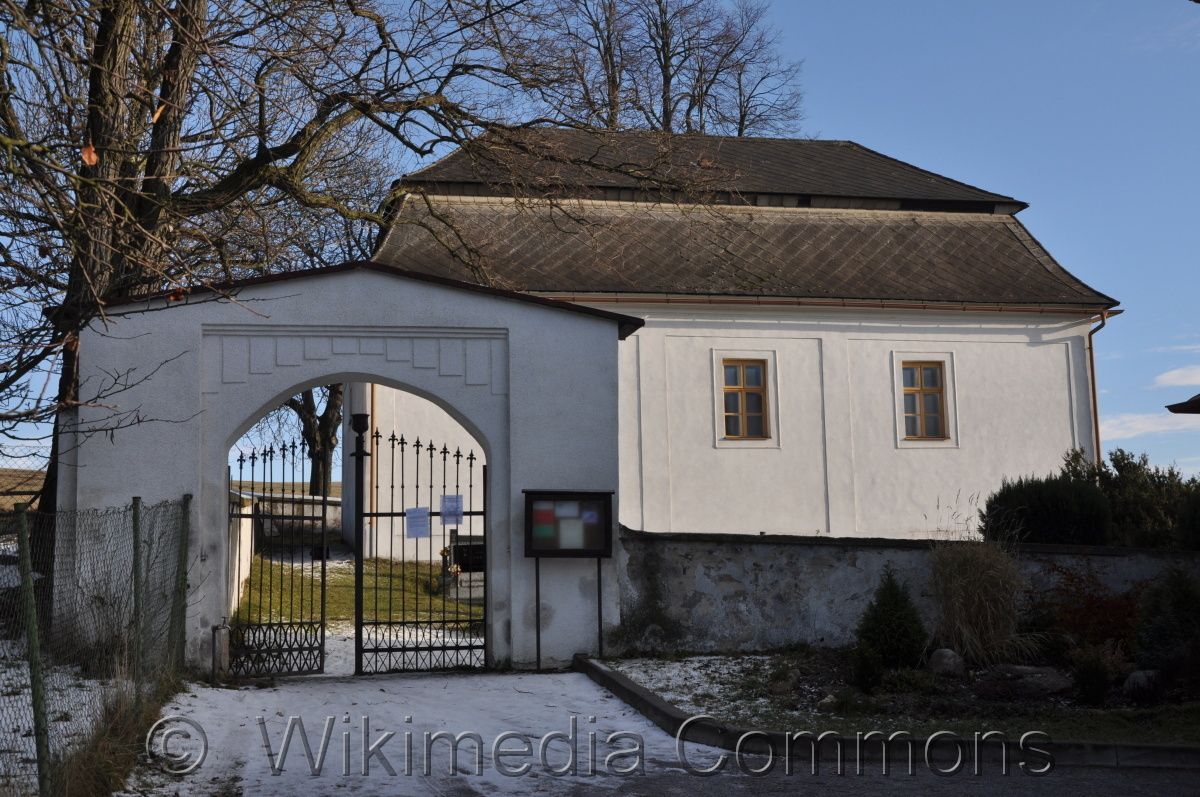
The toleration house of prayer in Daňkovice. Wikimedia Commons. Available here, [26/12/2020]
References
Evangelíci v rané toleranční době v Čechách a na Moravě 1–8. Praha 1995;
Melmuková, E.: Patent zvaný toleranční. Praha 1999;
Nešpor, Z. R.: Institucionální hranice českého tajného nekatolictví a počátků tolerančního protestantismu. In: Týž (ed.): Čeští nekatolíci v 18. století. Mezi pronásledováním a náboženskou tolerancí. Ústí nad Labem 2007, s. 84–111;
Semotanová, E. ‒ Cajthaml, J. a kol.: Akademický atlas českých dějin. Praha 2014, 2. akt. vydání 2016.

This work is licensed under a Creative Commons BY-NC-ND 4.0
Ecclesiastical administration in Bohemia, Moravia and Silesia in 1715
The map illustrates the condition of ecclesiastical administration in 1715, shortly after reorganization of the regional administration in Bohemia (1714). It shows an imaginary centre in the development of the Catholic ecclesiastical administration before the establishment of the Litoměřice (1655) and Hradec Králové (1664) dioceses in Bohemia and the Josephine reforms. It illustrates the practice of changing the vicariate seats and thus their names according to the particular parish whose administrator was appointed by a vicar. Modifications of the scope and definition of the vicariates were relatively scarce and were related to the emergence of new parishes.
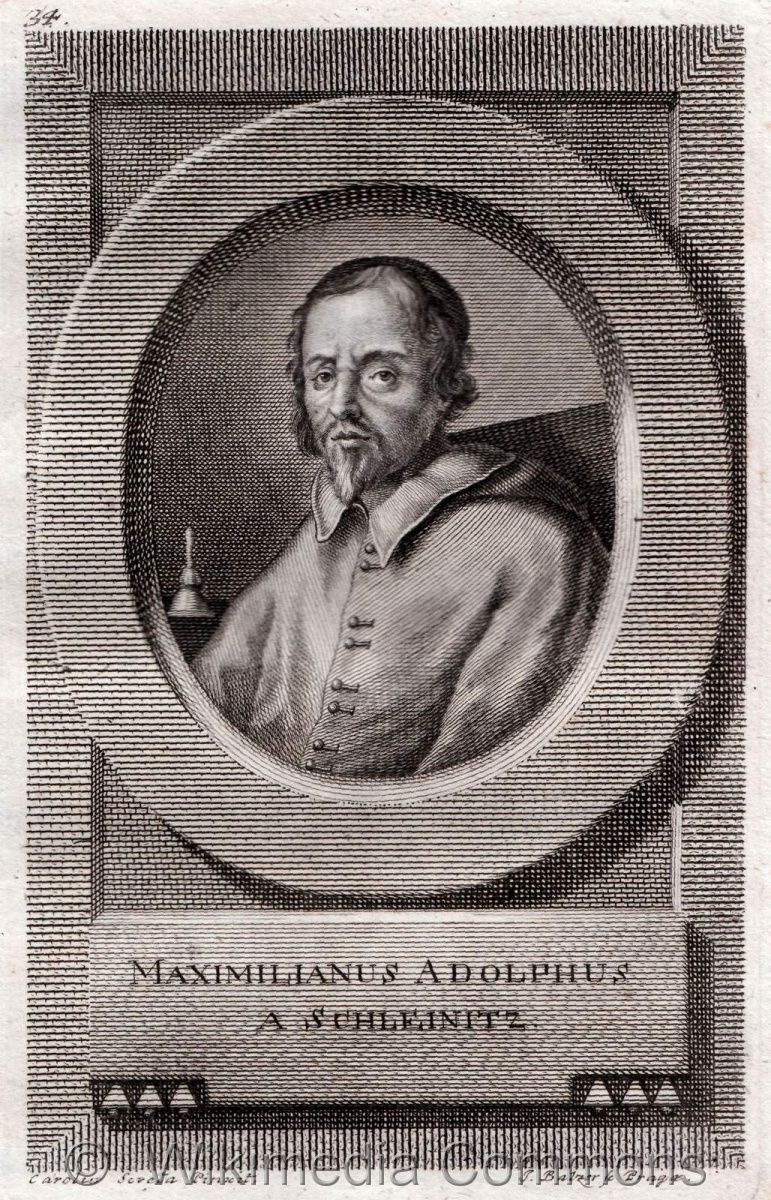
Maxmilian Rudolph Schleinitz (1605–1675), the first Bishop of Litoměřice. Wikimedia Commons. Available here, [26/12/2020].
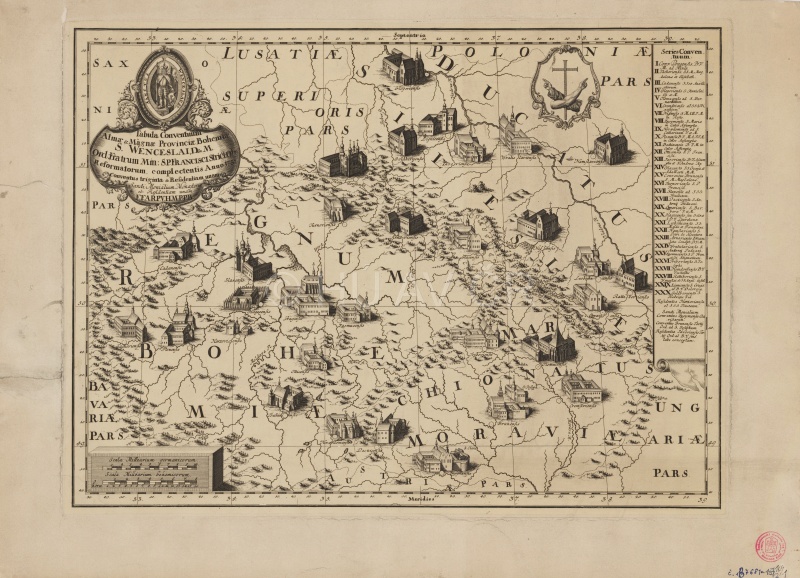
Map of Franciscan monasteries in the Czech Lands (1737). Map Collection of the Institute of History, CAS. Display map
References
Wolny, G.: Kirchliche Topographie von Mähren. I.–II. Brno 1855–1863;
Borový, K.: Dějiny diecése Pražské Praha, 1874;
Seifert, A.: Die Leitmeritzer Diözese nach ihren geschichtlichen, kirchlichen und topographischen Beziehungen, mit einer Landkarte der Diöcese. Saaz 1899;
Podlaha, A.: Posvátná místa Království českého I–VII. Praha 1907, 1908, 1909, 1910, 1911, 1912, 1913;
Hrubý, V.: Královéhradecká diecéze. Hradec Králové 1994;
Macek, J.: Biskupství litoměřické. Kostelní Vydří 2005;
Šůla, J.: Správní vývoj římskokatolické církve a jejích institucí na území stávajícího královéhradeckého okresu (ke dni 30. června 2000). In: Královéhradecko 2. Hradec Králové 2005, s. 101–171;
Semotanová, E. ‒ Cajthaml, J. a kol.: Akademický atlas českých dějin. Praha 2014, 2. akt. vydání 2016.

This work is licensed under a Creative Commons BY-NC-ND 4.0
Development of ecclesiastical organization in the Czech Lands (1777–1918)
Under the reign of Maria Theresa and Joseph II, the state influence on ecclesiastical matters intensified mainly for economic reasons. This situation also coincided with the pursuit of maximum effectiveness of ecclesiastical administration. In 1777, the Olomouc bishopric was promoted to archbishopric and the bishopric of Brno was established. In 1785, a bishopric was established in České Budějovice and the existing bishoprics of Litoměřice and Hradec Králové were territorially extended. In 1808, the Cheb region became part of the Prague archdiocese. Reflections on the establishment of new dioceses in the second half of the 19th century were motivated by nationalistic reasons, which is why they were not supported by the Pope. The form of the ecclesiastical organisation in the Czech Lands thus did not change until the end of the Habsburg Monarchy.
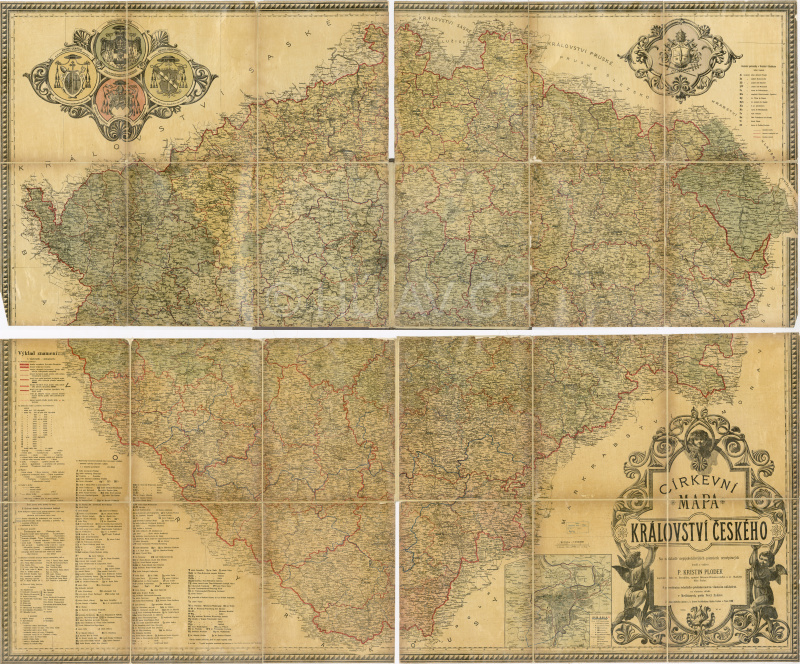
Ecclesiastical map of the Kingdom of Bohemia by František Kristián Plodek dated 1888 (scale 1 : 200,000), which provides an overview of the Bohemian ecclesiastical province. Map Collection of the Institute of History, CAS. Display map

Map of the Hradec Králové diocese with vedute of towns in the region of Antonín Jan Venuto from 1790 (scale approx. 1 : 200,000). One of the few surviving maps of ecclesiastical administrative units which, however, depicts the condition after the reforms of Joseph II. Map Collection of the Institute of History, CAS. Display map

Ecclesiastical map of the Archbishopric of Prague by František Kristián Plodek dated 1891 (scale 1 : 200,000) which, thanks to a detailed depiction of the vicariates, allows comparison of their borders with borders of the administrative districts, judicial districts, etc. Map Collection of the Institute of History, CAS. Display map
References
Boháč, Z.: Vývoj diecézní organizace českých zemí. In: Hledíková, Z. (ed.): Traditio et cultus. Miscellanea historica Bohemica Miloslao Vlk archiepiscopo Pragensi ab eius collegis amicisque ad annum sexagesimum dedicata. Praha 1993, s. 21–35;
Boháč, Z.: Mapy k územnímu vývoji české a moravské církevní provincie. Historická geografie 28, 1995, s. 183–191;
Boháč, Z.: Atlas církevních dějin českých zemí 1918–1999. Kostelní Vydří 1999;
Huber, K. A.: Bistumplane für Böhmen im 19. und 20. Jahrhundert. In: Bahlcke, J. – Grulich, R. (eds.): Kurt Augustinus Huber. Katholische Kirche und Kultur in Böhmen. Ausgewählte Abhandlungen. Münster 2005, s. 163–224;
Semotanová, E. ‒ Cajthaml, J. a kol.: Akademický atlas českých dějin. Praha 2014, 2. akt. vydání 2016.

This work is licensed under a Creative Commons BY-NC-ND 4.0

